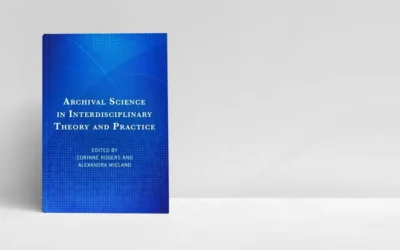Archival Usage Metrics: Needs and Challenges
Margot Note
The administration of primary sources is sufficiently different from that of books to require tools that measure service to users.
For example, libraries are familiar institutions to most people; many have visited school, public, and academic libraries throughout their lives. Conversely, few people hear about or enter an archives during their studies, even at the graduate level. For many people, archives—and the records of enduring value they hold—are foreign concepts. This lack of awareness makes tracking use metrics that much more critical, especially at institutions where people in leadership positions do not understand or recognize the importance of records of enduring value.
Collection Assessment
As archival materials became digital (either digitized or born-digital), collections became more accessible. The rise of more online collections led to a proliferation of methods, both theoretical and practical, for collection assessment. These methods focus on how repositories created these collections, including the systems used, metadata implemented, and website usability. Current studies, however, do not provide a standardized model for usage assessment of these collections or evaluating how many online users are utilizing the collection. Without models or standards, archivists cannot assess whether collections increase, keep, or lose their value for their institutions. Although the professional literature examines the use measurement of library websites in general, there is not yet a significant body of literature regarding the use of archival materials, and archivists have fallen behind in measuring the use of their collections. However, increasing the use of digital collections has always been a goal for archivists.
Web Analytics
Archivists should adopt a return-on-investment mindset when evaluating their services, as part of demonstrating that resources made available through their sites are responding to trends and user needs. With the exponential growth of web analytics tools in the past decade, leveraging such tools has become a vital evaluation technique. Many institutions have been using Google Analytics to measure their website performance and to analyze user behaviors. Unlike other web analytics tools using server log files, Google Analytics collects information by inserting codes into pages, enabling the tool to capture detailed demographic data that log files do not usually provide.
Use statistics can be evaluated from two perspectives. Either the use can be viewed from the standpoint of individual users in terms of sessions, or from the angle of the item in terms of views or page views. However, the data and statistics from analytics tools only tell a part of the story. Archivists must find ways to understand such information and interpret the data by combining relevant metrics and measurable indicators.
In time, archivists will need to develop collection usage analytics that reflect how different archival collections are from business websites, news websites, or blogs—where focus is typically on the total number of monthly views. For archival collections, it is not just about views but about use quality. Perhaps more important than developing standard metrics is the archival community’s need to become better at sharing examples of how their institutions evaluate digital collections use statistics.
CMS Metrics and Reporting
One way to determine metrics is through an archival collections management system (CMS) that offers various reports and statistics. Developing suitable methods to gather valuable information about the collections should help archivists identify problems with their collections, make administrative decisions, or market them correctly. Without good digital collection use statistics metrics, archivists are unclear about their collections’ impact and value. Being ignorant of these factors consequently creates budgeting and resource allocation challenges. Having the ability to collect statistics also helps archivists who need to show the value of the collections—and sometimes even their positions—to the organization’s decision-makers.
Margot Note
Margot Note, archivist, consultant, and author is a guest blogger for Lucidea, provider of ArchivEra, archival collections management software for today’s challenges and tomorrow’s opportunities. Read more of Margot’s posts, and register here for her upcoming webinar, “CMS Essentials for Success #6: Metrics and Reporting” on June 16, 2021.
Similar Posts
Ensuring Long-Term Access to Digital Archives
Long-term preservation is essential to ensure digital archives remain accessible and usable.
5 Best Practices for Personal Digital Archiving
Archivists have developed best practices for organizing and maintaining personal digital archives, safeguarding digital legacies for future generations.
Interview with the Editors: Wieland and Rogers on Interdisciplinary Archival Science
Alexandra Wieland and Corinne Rogers co-edited Archival Science in Interdisciplinary Theory and Practice. My interview with them is below.
The Importance of Personal Digital Archiving (Plus Steps to Get Started)
Archivists often help individuals manage and preserve digital files of personal significance.




Leave a Comment
Comments are reviewed and must adhere to our comments policy.
0 Comments